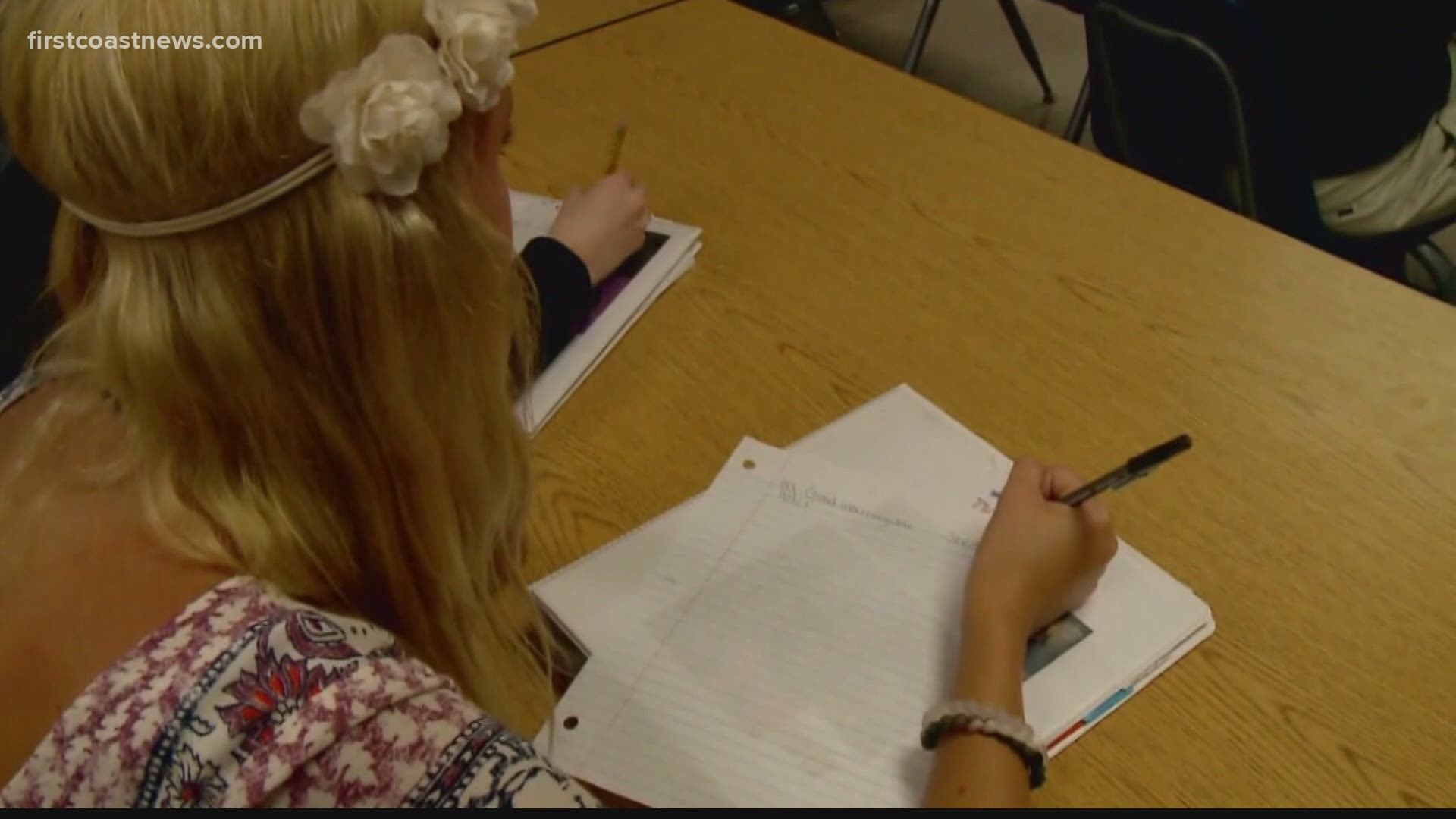JACKSONVILLE, Fla. — Following the approval of new stimulus money by Congress in late December, school districts in Florida are slated to receive nearly $3 billion in coronavirus relief funds, with more than $200 million estimated to go to districts in Northeast Florida.
The $900 billion COVID-19 relief package, which also provided for direct payments of $600 to qualifying Americans, was a long-awaited compromise between Republican and Democrat legislators that extended some provisions of the CARES Act.
Within the legislation, $82 billion is set aside for the Education Stabilization Fund (ESF). The original CARES Act legislation from late March 2020 set aside $30.75 billion for the ESF.
Florida's share of the new funds is $3.1 billion, with $2.8 billion going directly to school districts in the state.
According to estimates by the Florida Education Association obtained by First Coast News, Duval County Public Schools could see around $159 million allocated for a variety of issues stemming from COVID-19.
"It is a huge amount of money to meet the needs of what needs to be done, whether it's technology or whether it's meals," said Terrie Brady, President of Duval Teachers United.
The amount of funds allocated to each school district on the First Coast, as estimated by the FEA, are as follows:
- Baker County: $4,695,795.21
- Bradford County: $4,695,795.21
- Clay County: $18,157,074.81
- Duval County: $159,657,037.4
- Nassau County: $6,261,060.28
- Putnam County: $19,722,339.88
- St. Johns County: $10,956,855.49
But once a school district received the funds, which FEA predicts could be as early as January 22, the money can only be spent for certain purposes related to the ongoing pandemic.
Some of those purposes include:
- Purchasing personal protective equipment and other sanitation supplies.
- Training and development in sanitation procedures.
- Purchasing education technology, including hardware and software.
- Providing meals and technology for distance learning.
- Student mental health services.
- Services for remedial learning approaches.
- Protecting educators' jobs.
"Every school district is different as it relates to the need. But the one commonality is: all school districts have needs this year and next year that they didn't have two years ago," Brady said. "Every penny we get in is less money we have to take from the general revenue that can be shifted somewhere else."
Representatives for teachers' unions in Florida, like Brady, have called out what they describe as inequitable pay between newer, inexperienced teachers who saw large salary increases due to a change in state law last year, and veteran teachers whose salaries stayed relatively stagnant.
With the influx of new federal dollars, Brady said she hopes down the road the union can go back to the table with the district to renegotiate pay and benefits on behalf of school staff.
When the pandemic started in 2020, Brady said districts like Duval had to pull from general funds for things like PPE and sanitation, as well as technology, if CARES Act money couldn't foot the entire bill.
Notably absent from the new education provisions in the December stimulus package is an extension of COVID leave provisions, which expired at the end of 2020.
Brady said DCPS and Duval Teachers United were the first union-district in the state to sign a memorandum of understanding in December extending COVID-19 leave to the summer.

